40 labels and selectors in kubernetes
Field Selectors | Kubernetes May 26, 2021 · Field selectors let you select Kubernetes resources based on the value of one or more resource fields. Here are some examples of field selector queries: metadata.name=my-service metadata.namespace!=default status.phase=Pending This kubectl command selects all Pods for which the value of the status.phase field is Running: kubectl get pods --field-selector … Kubernetes API Reference Docs Welcome to the Kubernetes API. You can use the Kubernetes API to read and write Kubernetes resource objects via a Kubernetes API endpoint. Resource Categories. This is a high-level overview of the basic types of resources provide by the Kubernetes API and their primary functions.
Well-Known Labels, Annotations and Taints | Kubernetes Aug 23, 2022 · Well-Known Labels, Annotations and Taints. Kubernetes reserves all labels and annotations in the kubernetes.io and k8s.io namespaces. This document serves both as a reference to the values and as a coordination point for assigning values. Labels, annotations and taints used on API objects app.kubernetes.io/component

Labels and selectors in kubernetes
Field Selectors | Kubernetes kubectl get services --all-namespaces --field-selector metadata.namespace!=default Chained selectors As with label and other selectors, field selectors can be chained together as a comma-separated list. This kubectl command selects all Pods for which the status.phase does not equal Running and the spec.restartPolicy field equals Always: Kubernetes labels, selectors & annotations with examples Labels are attached to Kubernetes objects and are simple key: value pairs. You will see them on pods, replication controllers, replica sets, services, and so on. Kubernetes API Reference Docs Welcome to the Kubernetes API. You can use the Kubernetes API to read and write Kubernetes resource objects via a Kubernetes API endpoint. Resource Categories. This is a high-level overview of the basic types of resources provide by the Kubernetes API and their primary functions.
Labels and selectors in kubernetes. Persistent Volumes | Kubernetes Sep 22, 2022 · This document describes persistent volumes in Kubernetes. Familiarity with volumes is suggested. Introduction Managing storage is a distinct problem from managing compute instances. The PersistentVolume subsystem provides an API for users and administrators that abstracts details of how storage is provided from how it is consumed. To do … kubernetes.io › docs › referenceKubernetes API Reference Docs Welcome to the Kubernetes API. You can use the Kubernetes API to read and write Kubernetes resource objects via a Kubernetes API endpoint. Resource Categories. This is a high-level overview of the basic types of resources provide by the Kubernetes API and their primary functions. A Kubernetes Guide for Labels and Selectors | Datree.io Labels can be used by both Kubernetes and homo-sapiens to organize and to select subsets of objects. When dealing with Kubernetes config files, labels are always added under the "metadata" section of the manifest. Labels vs annotations Annotations are also key-value pairs that are attached to objects and are used to describe Kubernetes resources. Labels and Selectors | Kubernetes Aug 09, 2022 · Label selectors. Unlike names and UIDs, labels do not provide uniqueness.In general, we expect many objects to carry the same label(s). Via a label selector, the client/user can identify a set of objects.The label selector is the core grouping primitive in Kubernetes.
Kubernetes Core Concepts - Labels, Selectors and Annotations What are Selectors in Kubernetes? Selectors are used to filter out objects based on their assigned Labels. Labels and Selectors goes hand in hand. For example Selectors will help us filter out objects like give all the application pods which are of type staging. Example syntax to define Selectors Labels and Selectors in Kubernetes - howtoforge.com Selectors are used by the users to select a set of objects. The label selector is the core grouping primitive in Kubernetes. Kubernetes API supports two types of selectors. This allows filtering by key and value, where matching objects should satisfy all the specified labels. This allows filtering keys according to a set of values. docs.kubernetes.org.cn › 247Kubernetes Labels 和 Selectors _ Kubernetes(K8S)中文文档 ... Labels选择器. 与Name和UID 不同,标签不需要有唯一性。一般来说,我们期望许多对象具有相同的标签。 通过标签选择器(Labels Selectors),客户端/用户 能方便辨识出一组对象。标签选择器是kubernetes中核心的组成部分。 Kubernetes Labels, Selectors, and Annotations - vpundit.com Kubernetes Labels, Selectors, and Annotations. The use of metadata tags attached to various resources and objects is a requirement for any Kubernetes environment. It can help DevOps teams to solve several problems. DevOps teams can more quickly troubleshoot issues along the application development pipeline, apply configuration changes in bulk ...
kubernetes.io › docs › referenceKubernetes API Reference Docs Welcome to the Kubernetes API. You can use the Kubernetes API to read and write Kubernetes resource objects via a Kubernetes API endpoint. Resource Categories. This is a high-level overview of the basic types of resources provide by the Kubernetes API and their primary functions. How adding Kubernetes label selectors caused an outage in Grafana Cloud ... In the case of Kubernetes services, you can tell Kubernetes to select pods that only have a specific label; this is referred to as a selector. You may create a deployment of "applicationX" and attach a label to it, and then have a service that checks for that label in order to confirm that it has only found pods from that deployment with ... Kubernetes Labels, Selectors, and Annotations | Getting Started - ContainIQ As their name suggests, label selectors allow you to identify the objects you have tagged with particular labels. Label selectors can either be equality-based or set-based. Equality-based label selectors work by specifying an exact value that you want to match against. kubectl Cheat Sheet | Kubernetes Aug 09, 2022 · This page contains a list of commonly used kubectl commands and flags. Kubectl autocomplete BASH source <(kubectl completion bash) # setup autocomplete in bash into the current shell, bash-completion package should be installed first. echo "source <(kubectl completion bash)" >> ~/.bashrc # add autocomplete permanently to your bash shell. You can …
kubernetes.io › docs › referenceWell-Known Labels, Annotations and Taints | Kubernetes Aug 23, 2022 · Well-Known Labels, Annotations and Taints. Kubernetes reserves all labels and annotations in the kubernetes.io and k8s.io namespaces. This document serves both as a reference to the values and as a coordination point for assigning values. Labels, annotations and taints used on API objects app.kubernetes.io/component
Labels and Selectors - Kubernetes The label selector is the core grouping primitive in Kubernetes. The API currently supports two types of selectors: equality-based and set-based . A label selector can be made of multiple requirements which are comma-separated. In the case of multiple requirements, all must be satisfied so the comma separator acts as a logical AND ( &&) operator.
What is the difference between Label and Selector in kubernetes? Labels can be used to organize and to select subsets of objects. Via a label selector, the client/user can identify a set of objects. The label selector is the core grouping primitive in Kubernetes. In a nutshell label selectors depend on labels to select a group of resources such as pods.
How to Provision Node Labels and Selectors in Kubernetes? (K8s) Labels selectors are core grouping primitive in Kubernetes. They are used by the users to select a set of objects. Kubernetes API currently supports two types of selectors − Equality-based...
Using Kubernetes Annotations, Labels, and Selectors - How-To Geek Annotations, labels, and selectors are used to manage metadata attached to your Kubernetes objects. Annotations and labels define the data while selectors provide a way to query it. Here are the differences between the three concepts, what they're designed for, and how you can use them to manage your resources. Annotations
Kubernetes Label Selector And Field Selector - Medium Labels are key value pairs that can be used to identify, or group the resources in Kubernetes. In other words, labels can be used to select resources from a list. You can label Kubernetes native...
Labels and Selectors — Kubernetes on AWS 0.1 documentation Labels and Selectors ¶ Labels are key/value pairs that are attached to Kubernetes objects, such as pods (this is usually done indirectly via deployments). Labels are intended to be used to specify identifying attributes of objects that are meaningful and relevant to users. Labels can be used to organize and to select subsets of objects.
kubernetes.io › working-with-objects › labelsLabels and Selectors | Kubernetes Aug 09, 2022 · Labels are key/value pairs that are attached to objects, such as pods. Labels are intended to be used to specify identifying attributes of objects that are meaningful and relevant to users, but do not directly imply semantics to the core system. Labels can be used to organize and to select subsets of objects. Labels can be attached to objects at creation time and subsequently added and ...
Node Selectors in Kubernetes. nodeSelector is the simplest form … Jan 15, 2022 · To achieve this goal, Kubernetes provides 2 methods: NodeSelector; Node Affinity; Let’s Discuss NodeSelector: nodeSelector is the simplest form of node selection. It is a field PodSpec and specifies a map of key-value pairs. For the Pod to be eligible to run on a node, the node must have the key-value pairs as labels attached to them.
The Purpose of Labels and Selectors in Kubernetes Selectors are just a way to reference objects by labels. If we set a selector to type: api, then it would be referencing all objects with that label. This turns out to be a wildly useful feature, as you can use it to define relatively complex sets of rules to determine what node a pod would be scheduled onto, or what backend a service should use.
kubernetes.io › docs › referencekubectl Cheat Sheet | Kubernetes Aug 09, 2022 · This page contains a list of commonly used kubectl commands and flags. Kubectl autocomplete BASH source <(kubectl completion bash) # setup autocomplete in bash into the current shell, bash-completion package should be installed first. echo "source <(kubectl completion bash)" >> ~/.bashrc # add autocomplete permanently to your bash shell. You can also use a shorthand alias for kubectl that also ...
Labels and Selectors - Kubernetes Via a label selector, the client/user can identify a set of objects. The label selector is the core grouping primitive in Kubernetes. The API currently supports two types of selectors: equality-based and set-based . A label selector can be made of multiple requirements which are comma-separated.
Assigning Pods to Nodes | Kubernetes Jul 17, 2022 · Pods are namespaced objects in Kubernetes, so Pod labels also implicitly have namespaces. Any label selectors for Pod labels should specify the namespaces in which Kubernetes should look for those labels. You express the topology domain (X) using a topologyKey, which is the key for the node label that the system uses to denote the domain.
en.wikipedia.org › wiki › KubernetesKubernetes - Wikipedia Just like labels, field selectors also let one select Kubernetes resources. Unlike labels, the selection is based on the attribute values inherent to the resource being selected, rather than user-defined categorization. metadata.name and metadata.namespace are field selectors that will be present on all Kubernetes objects. Other selectors that ...
Kubernetes - Wikipedia Labels and selectors. Kubernetes enables clients (users or internal components) to attach keys called "labels" to any API object in the system, such as pods and nodes. Correspondingly, "label selectors" are queries against labels that resolve to matching objects. When a service is defined, one can define the label selectors that will be used by ...
Kubernetes - Labels & Selectors - tutorialspoint.com Labels selector are core grouping primitive in Kubernetes. They are used by the users to select a set of objects. Kubernetes API currently supports two type of selectors − Equality-based selectors Set-based selectors Equality-based Selectors They allow filtering by key and value. Matching objects should satisfy all the specified labels.
Kubernetes Selector | How does Selector Works in Kubernetes? - EDUCBA 1. Label Selector. We apply labels to the Kubernetes objects to organize or select a group of objects. Labels can be attached at creation time or added and modified at any time. Labels are case sensitive. We can use Label Selector using the option '-l'. Let's create three pods with labels "env: prod" and "app: nginx-web" and two ...
Kubernetes API Reference Docs Welcome to the Kubernetes API. You can use the Kubernetes API to read and write Kubernetes resource objects via a Kubernetes API endpoint. Resource Categories. This is a high-level overview of the basic types of resources provide by the Kubernetes API and their primary functions.
Kubernetes labels, selectors & annotations with examples Labels are attached to Kubernetes objects and are simple key: value pairs. You will see them on pods, replication controllers, replica sets, services, and so on.
Field Selectors | Kubernetes kubectl get services --all-namespaces --field-selector metadata.namespace!=default Chained selectors As with label and other selectors, field selectors can be chained together as a comma-separated list. This kubectl command selects all Pods for which the status.phase does not equal Running and the spec.restartPolicy field equals Always:
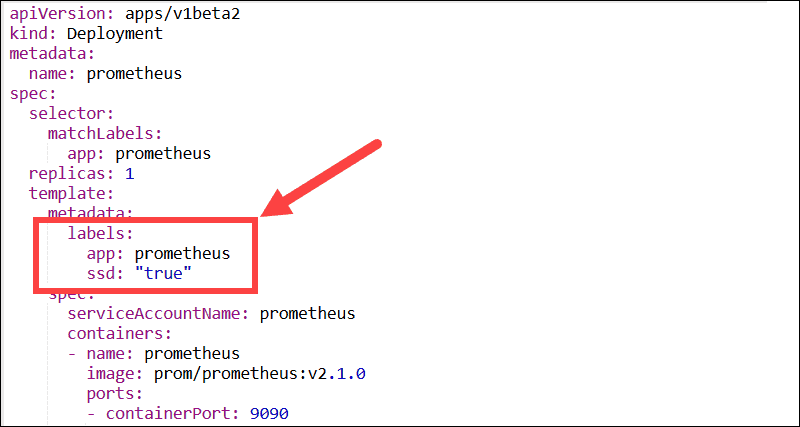




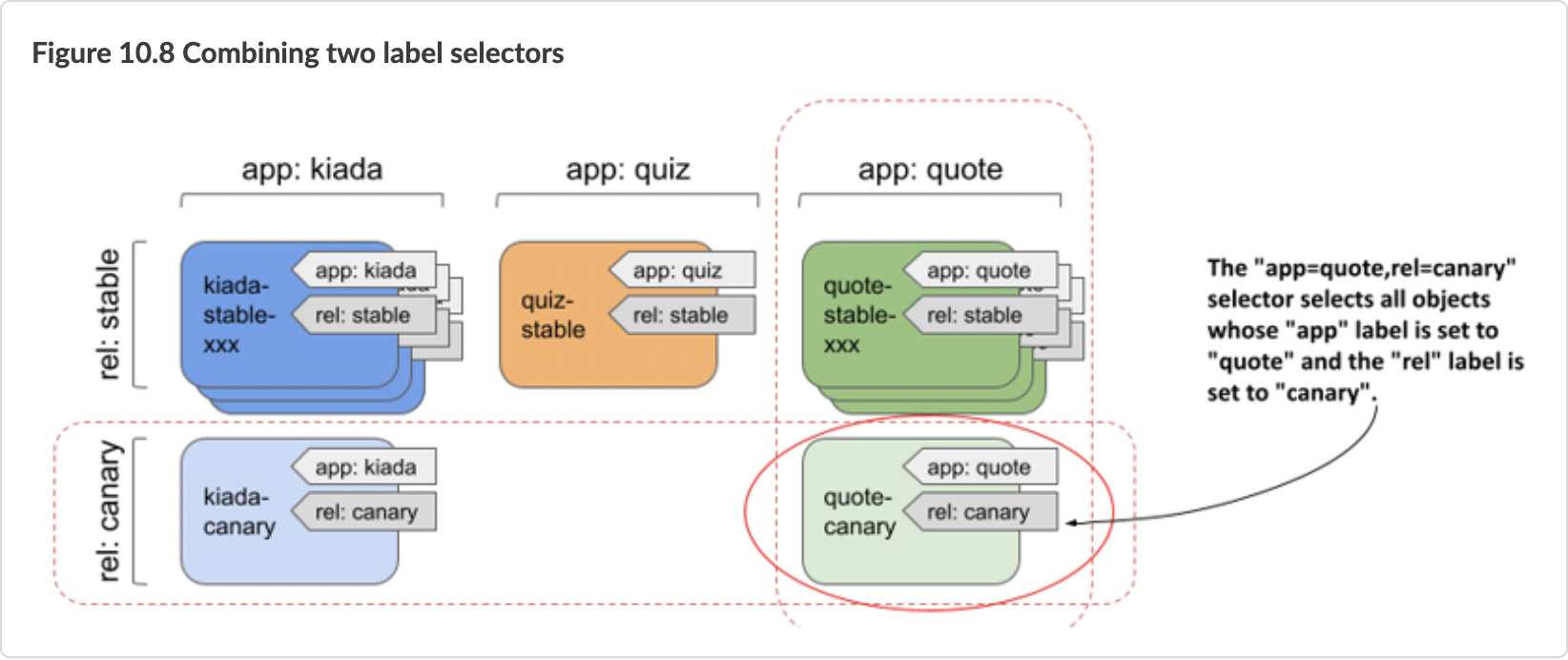


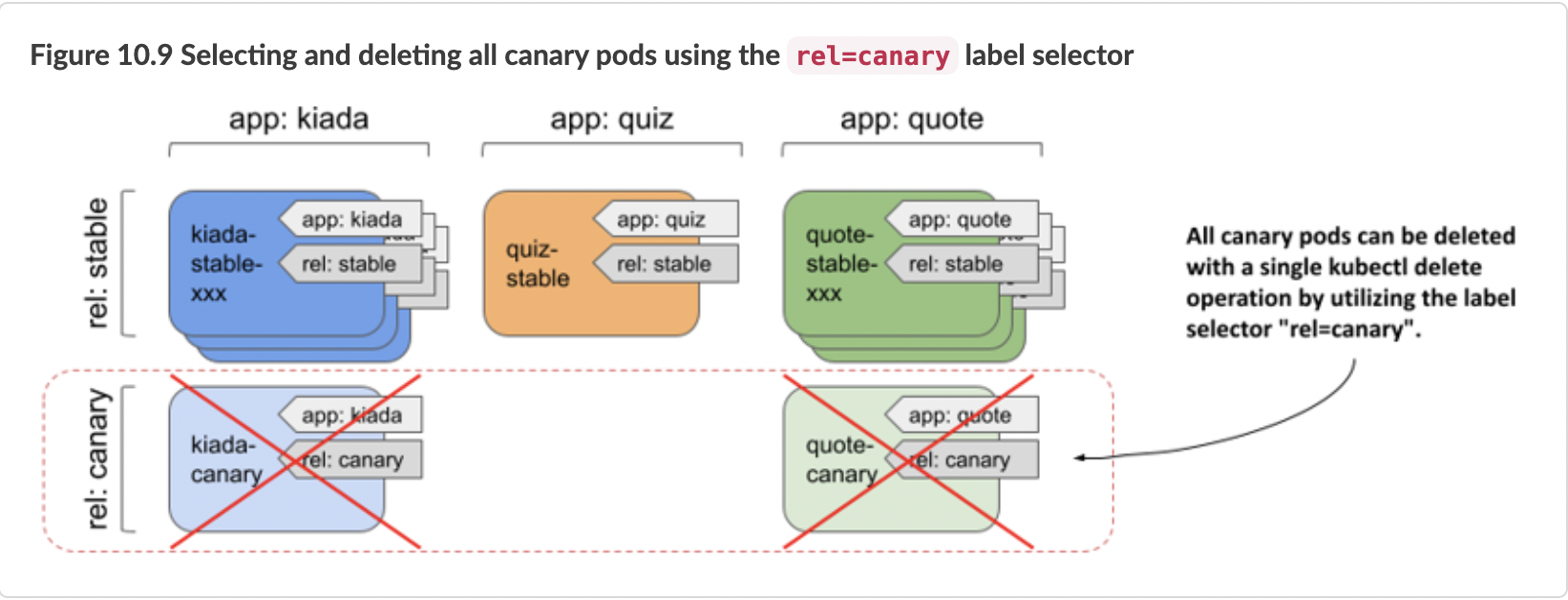

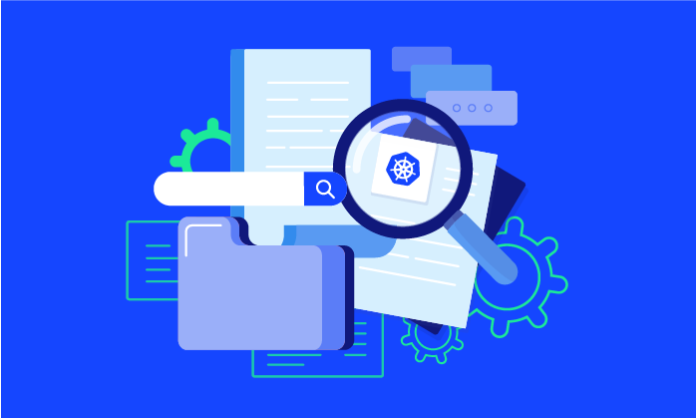




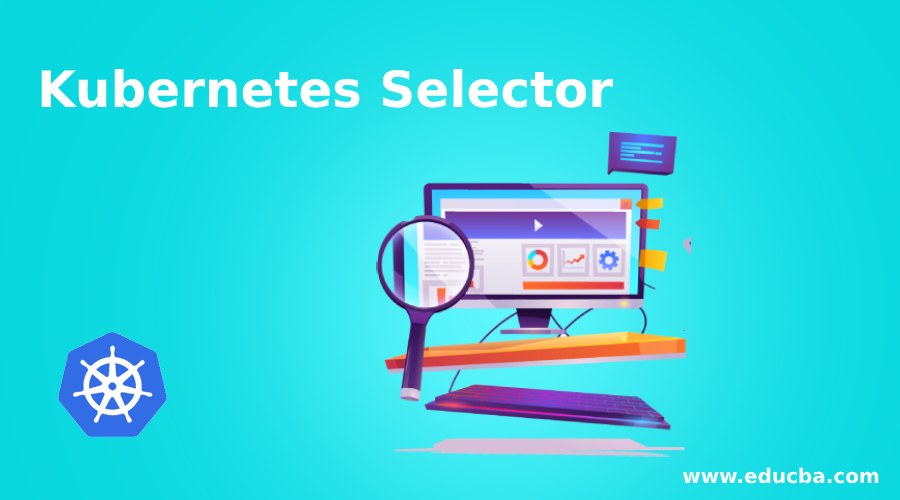
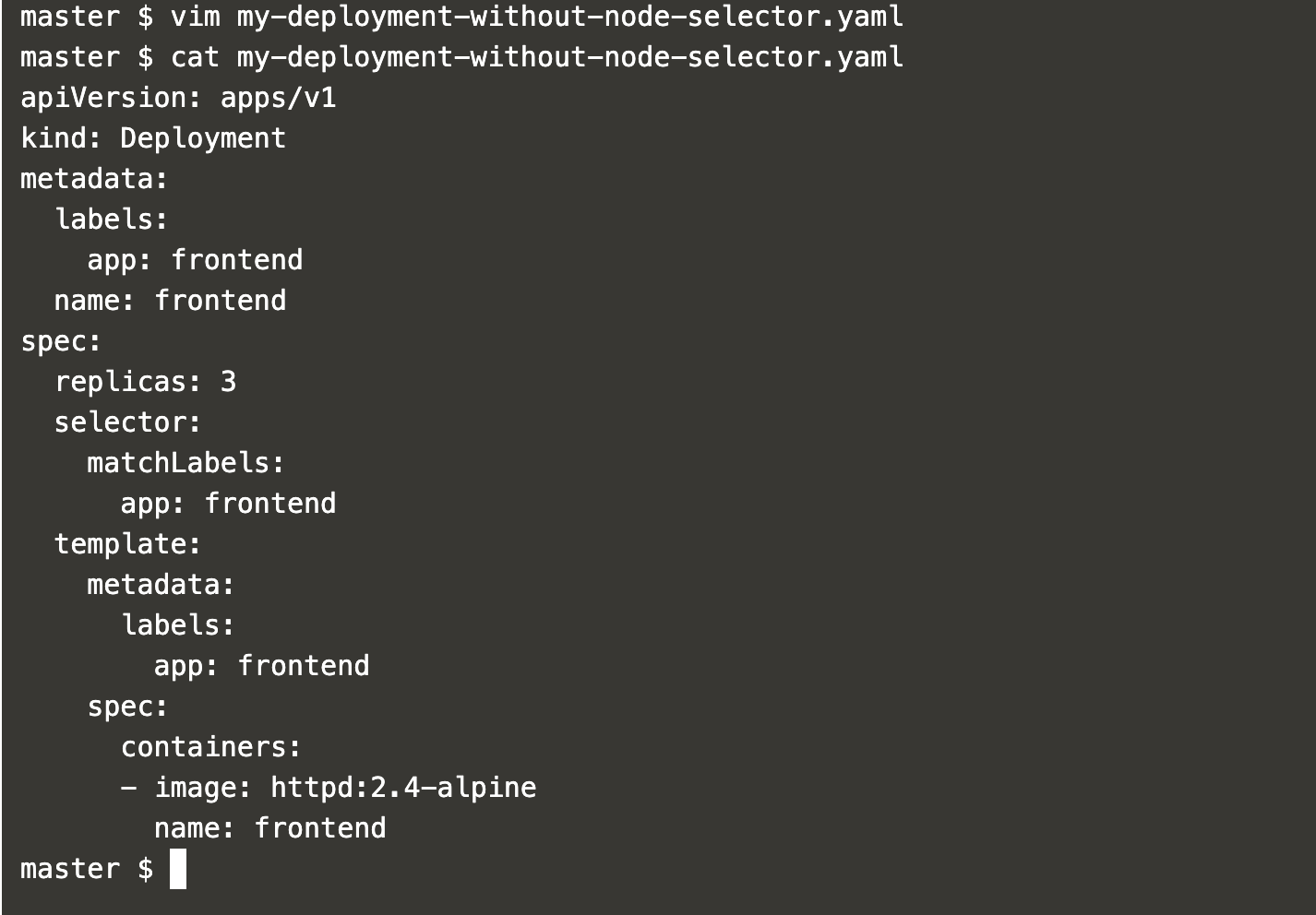
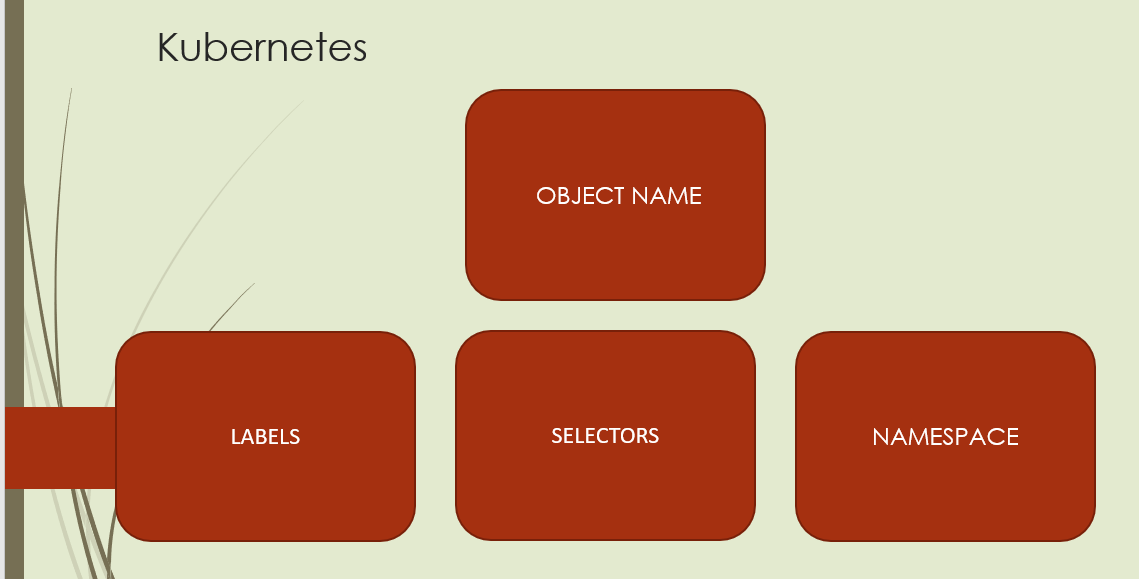
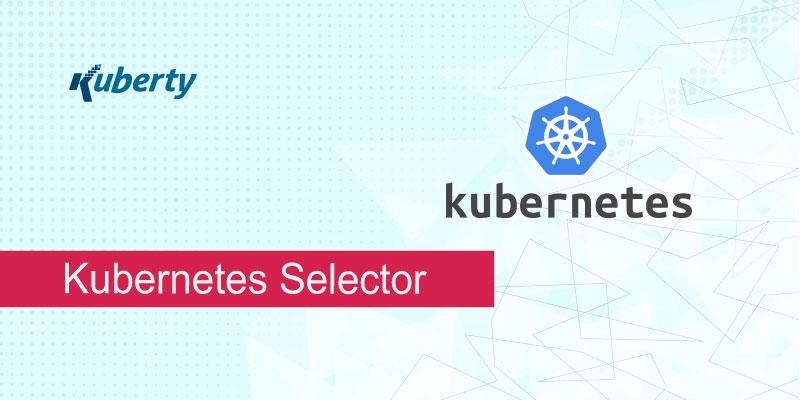
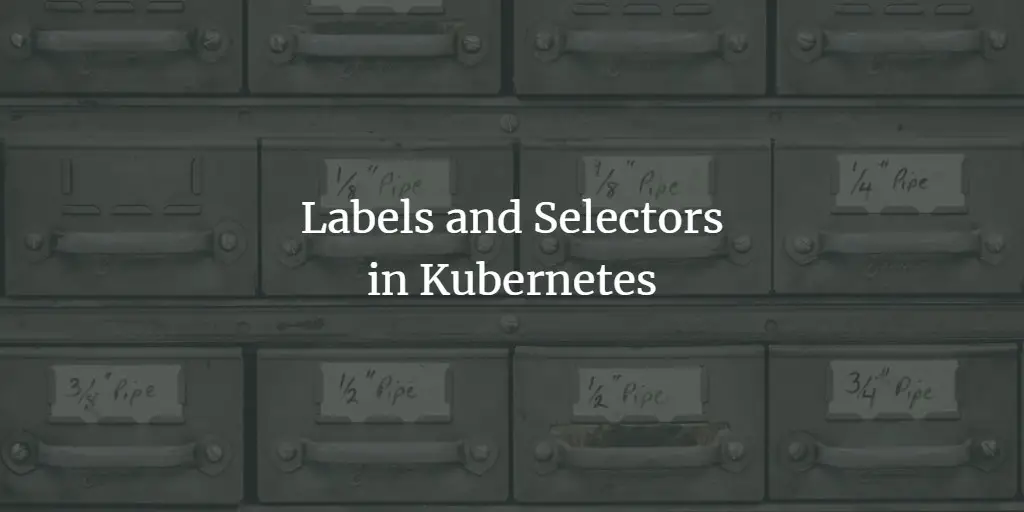
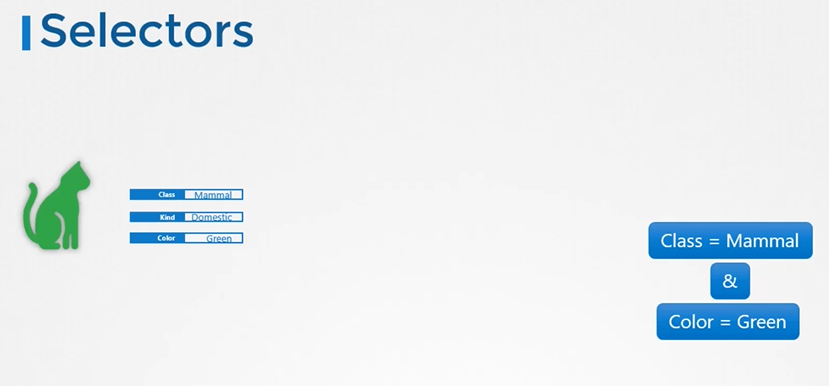
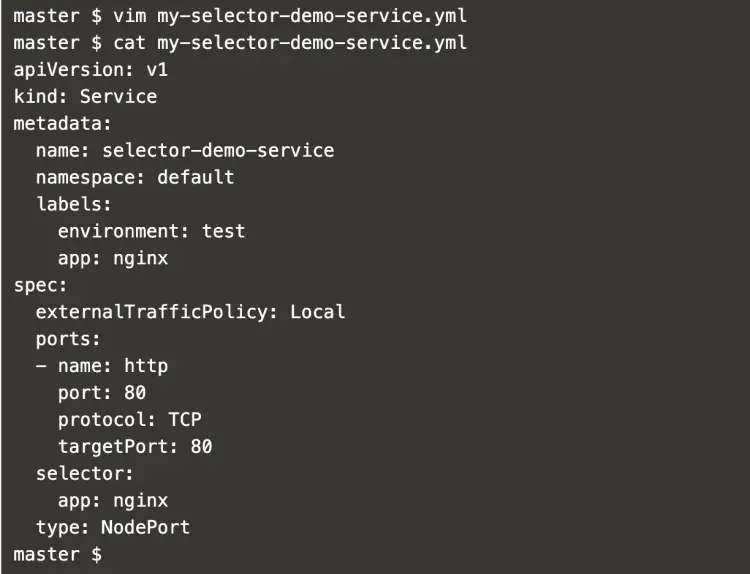

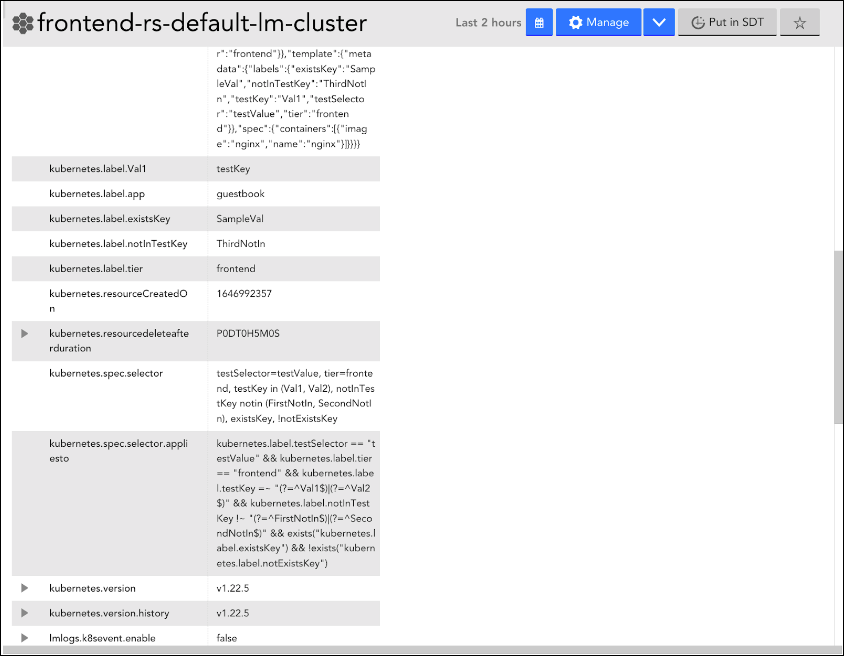

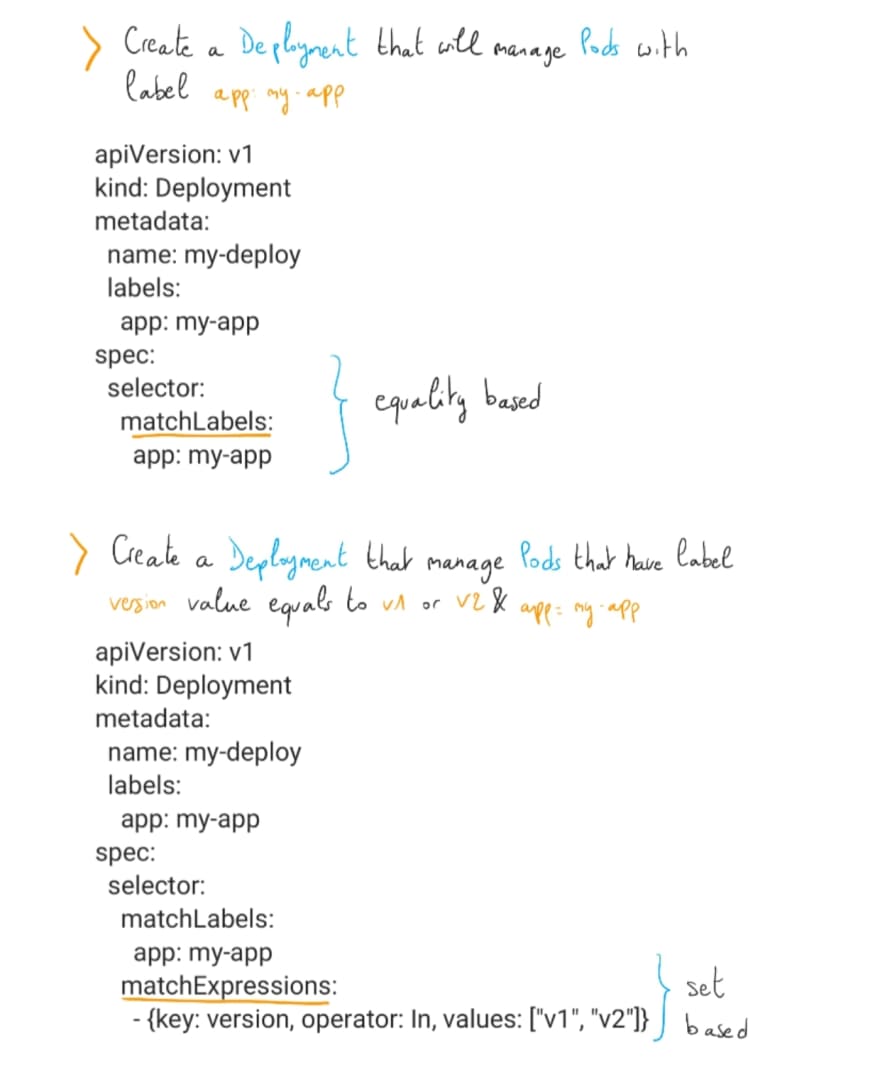
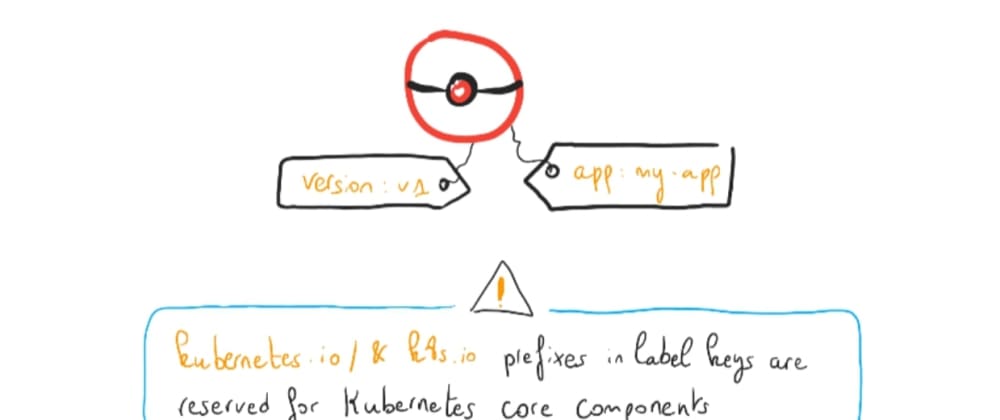
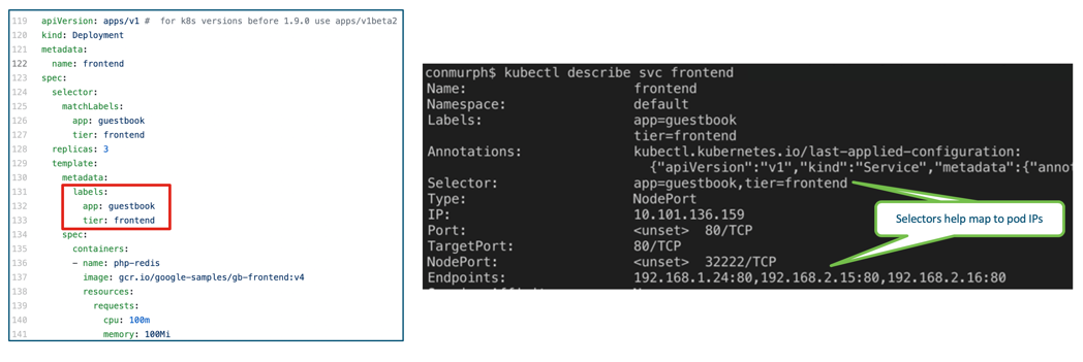


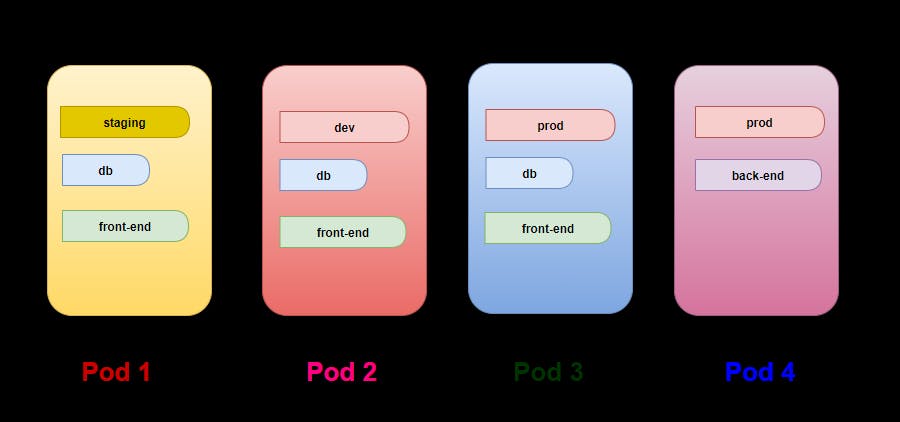
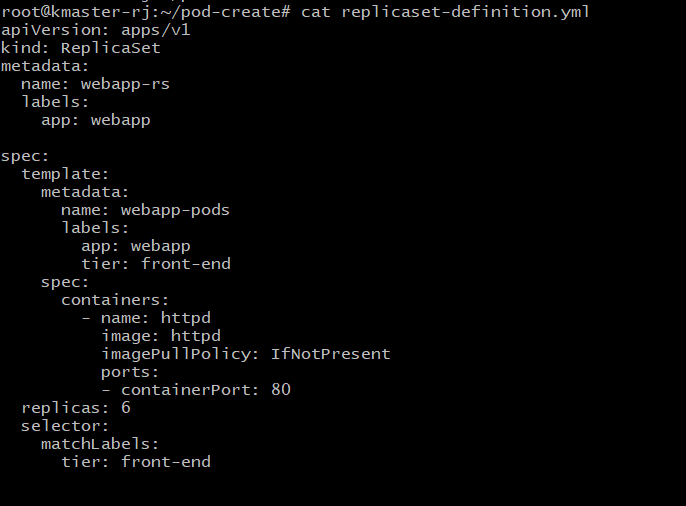
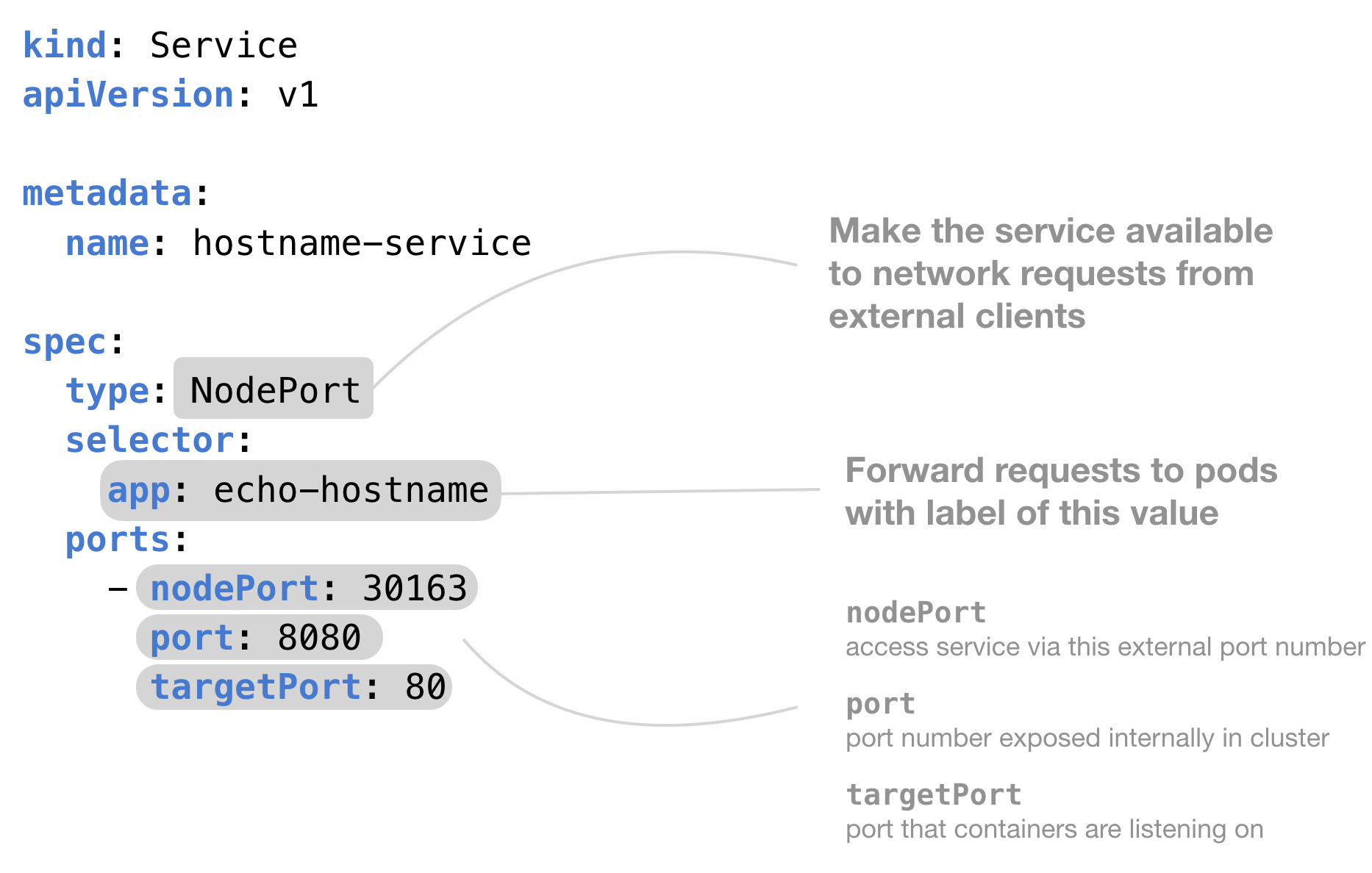
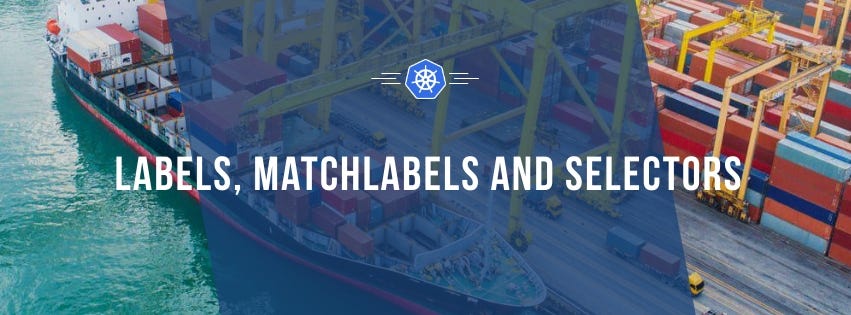
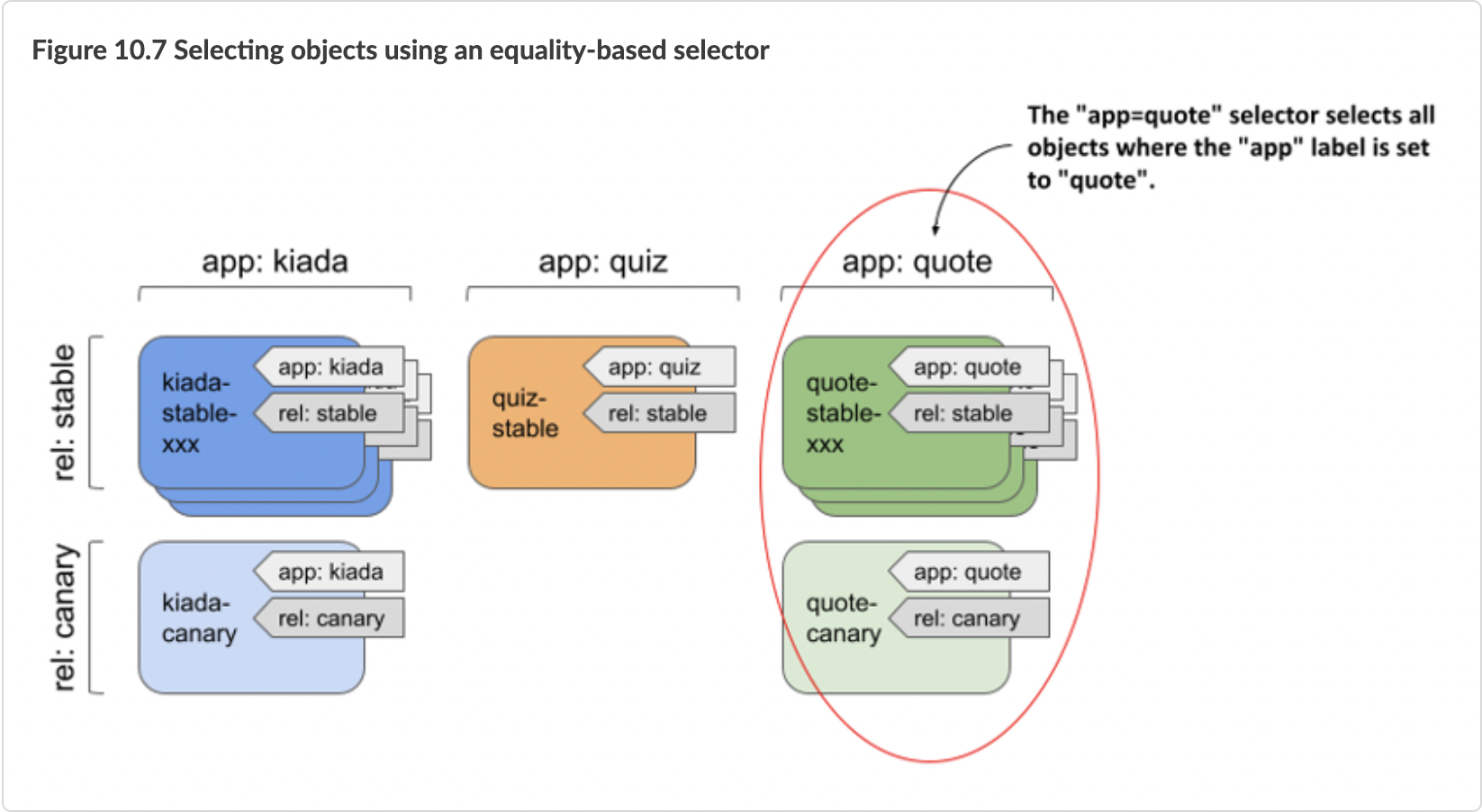


Post a Comment for "40 labels and selectors in kubernetes"